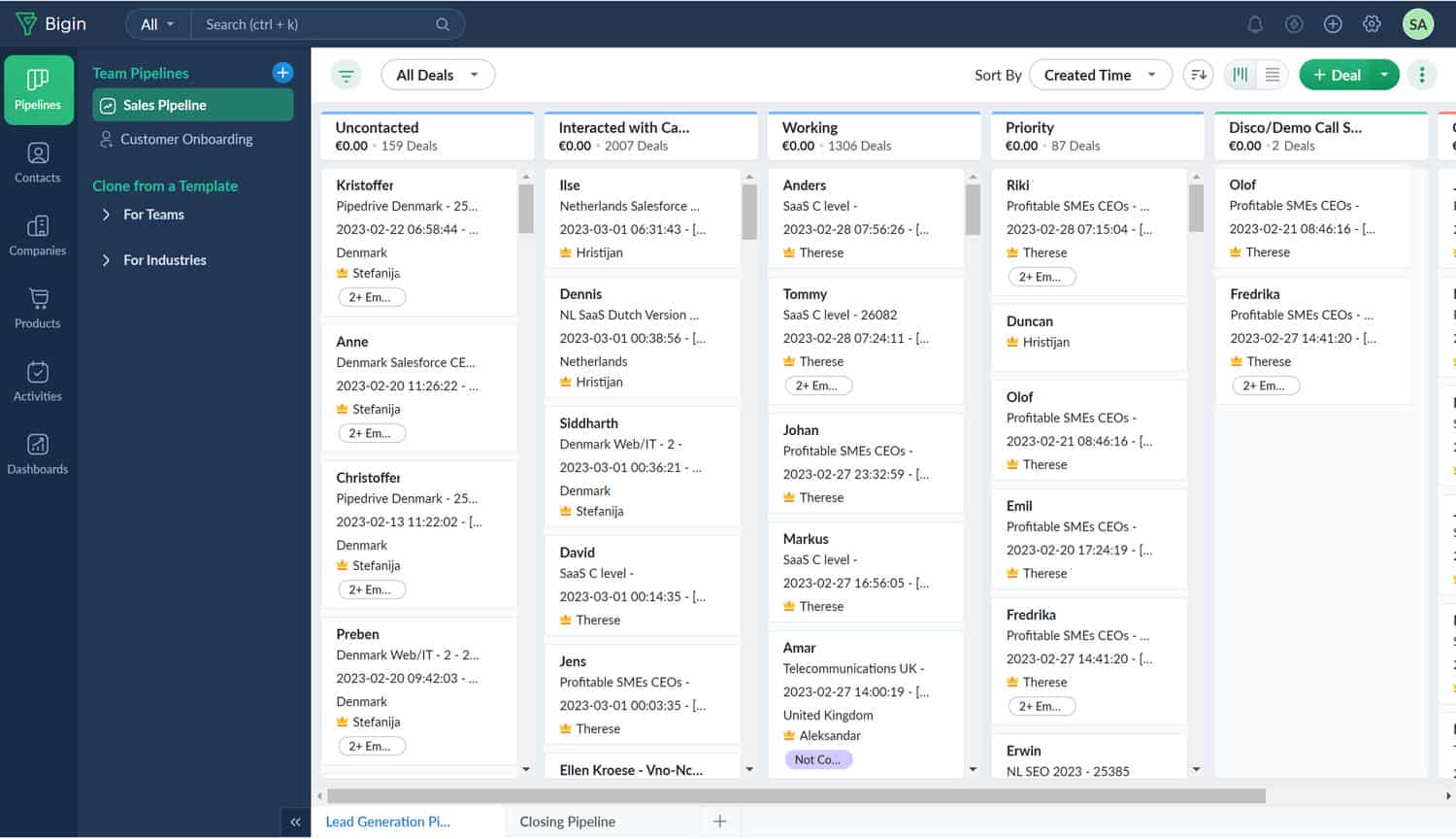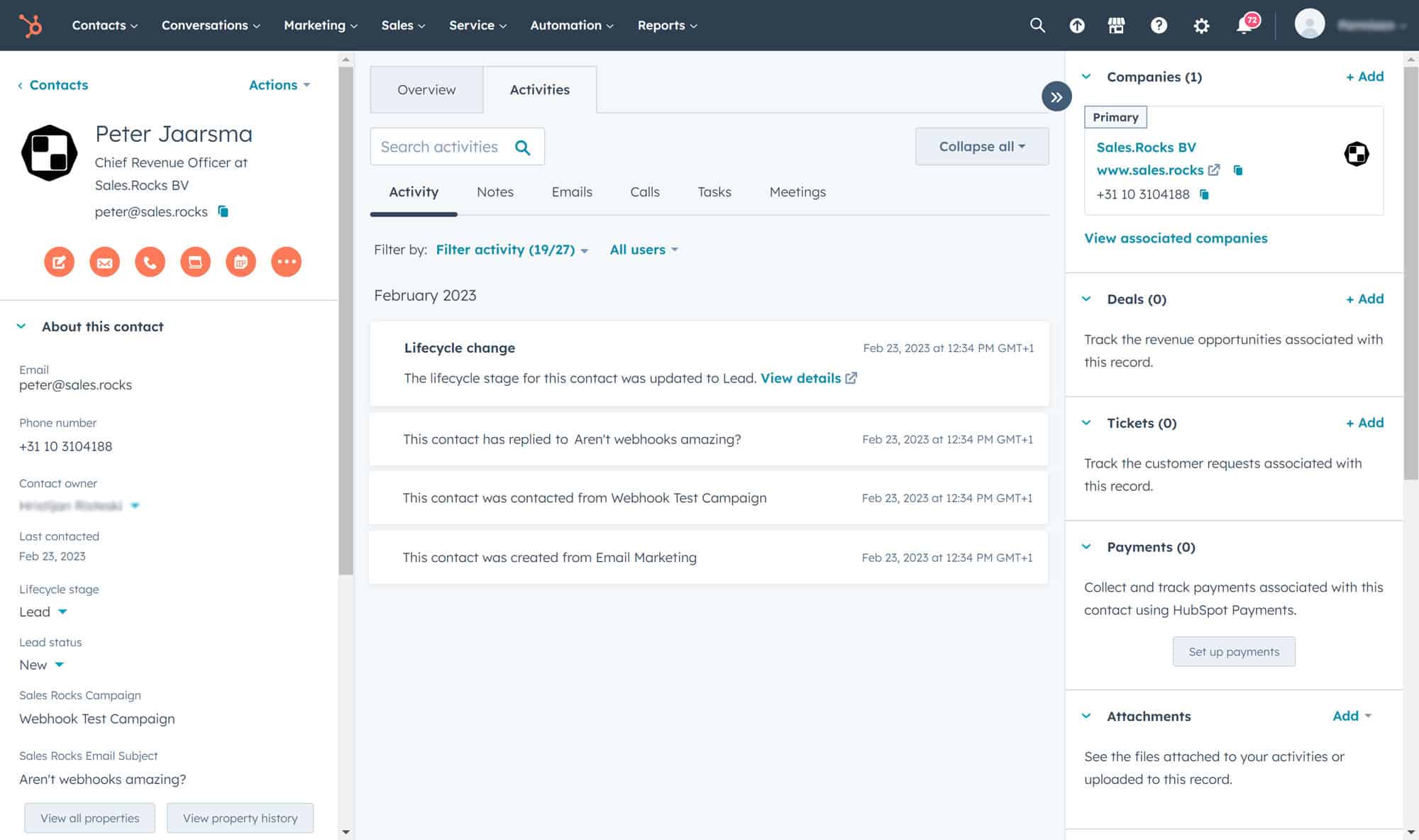Updated on March 1, 2023
Tools are handy for all sorts of streamlining and automating processes. And this is not just for companies in a specific industry or size but in general.
More so often companies are in need of a base toolset to run their business, and in most cases (especially for B2B companies) a CRM tool is mandatory.
And, it’s not a wonder why CRM tools are the base for many companies, as they can cover most of the processes for the sales and marketing teams. CRMs also capture customer data which allows companies to create more targeted campaigns and improve customer service by providing a central database for customer information. With the right CRM, companies are able to increase sales, service their customers quickly and efficiently, streamline processes, and nurture relationships with their customers. All these together result in better ROI for the companies.
Now, let’s set the focus on preparing your CRM for cold outreach.
When doing cold outreach you’ll want to streamline your communications, data, and analytics processes to get the most out of your cold outreach efforts.
We’ve seen that preparing and connecting your CRM to your sales prospecting tool is key to successful outreach, so let’s go over how you can best do that.
What are the CRM must-haves for cold outreach?
Cold outreach can be a big challenge if you are not prepared for it. This is why it is important to have the right tools and strategies in place in order to achieve success. An effective CRM system with good data storage, a robust customer segmentation feature, easy importing options, custom fields, and automated tasks should cover everything for your cold outreach.
These are just some of the must-haves for any CRM when it comes to successful cold outreach, so make sure you invest in one that meets your requirements.
Most of the popular and most used CRM already have all of these features (Hubspot, Pipedrive, Salesforce, Zoho CRM, Zoho Bigin, etc.), however, some other CRMs might not provide all of the options to connect your cold prospecting. But don’t just go now on the hunt for the “best”, most priced CRM out there just to be sure that could leverage all of this with your new tool.
We know that most companies already have their CRM of choice and, understandably are not ready to switch or invest in a new solution, just to be compatible with their sales prospecting tool. So, there are some weeks you could do to establish at least the basic connection with your sales tools and continue using your CRM.
How to prepare your CRM for prospecting?
#1 Pipelines
Creating different pipelines is very important when it comes to the sales cycle. We are going to take b2b as an example here:
The B2B sales process has different stages in place, and they cover all of the leads, potentials, and clients in the buyer’s journey.
So in order to do sales prospecting according to the stages of the buyer’s journey you’ll need to sort the incoming leads and potentials within your CRM. If your CRM has the feature to create different pipelines, you are good to go. If not, an alternative is to create custom views (for example in Zoho CRM), or even use Workflows to guide the incoming leads through the pipeline.
Either way, we advise you to prepare your pipelines upfront to be ready for the constant flow of leads.

#2 Custom fields
Many of the CRM tools cover the custom fields. These would be the extra fields you create to map the incoming data for the leads. Basic fields like names, locations, and all sorts of company and contact data are already covered in your CRM, however, you need to check and add important fields that will contain extra information from your outreach.
For example, when doing cold outreach with Sales.Rocks, adding a field to identify the campaign you are sending or the time when your prospect has opened, clicked, or replied to your cold email it’s a good way to monitor the success of your outreach, directly in your CRM.
Having the custom fields is also important to get additional information on the prospect, for example, with Sales.Rocks data, you can know which web technologies that company is using and add this information to your CRM, and use it later in your sales pipeline.

#3 (Dis)allowing duplicates
We can say with confidence that this is one feature is offered in all CRMs. However, it’s the most neglected feature by CRM Managers. By switching this feature on you’ll tell your CRM that you don’t want any duplicate values to be created in your leads, contacts, or accounts database. And this is important for keeping your CRM clean and tidy.
The disallowing duplicates option is mandatory when you are connecting your CRM with a sales automation tool, mainly for the data population and enrichment, but also for the flow of the cold outreach.
Let’s explain a bit more:
By allowing duplicates in your CRM you are risking having multiplied data for a single lead in your system. This means that the Sales Representatives, Account Managers, or Marketing Specialists that need to pick up the potential won’t know at which stage this lead is. So, the risk of contacting the same person multiple times, or falsely qualifying or disqualifying a lead has high chance.
In addition to this, when you add your prospecting information (campaign results, time of contact, campaign owner, etc) each time a new record will be created, and you’ll end up with dozens of the same records to follow up with, which is a sign of cold outreach gone wrong.
So, make sure you have your disallowing duplicates switched on before connecting your CRM to your sales prospecting tool.
Missing a link in your prospecting?
Add Sales.Rocks to your sales chain to lock new deals in.
#4 Contacts & Accounts set-up
As the base of the business, you most certainly won’t be the only one using the CRM, thus many processes will already be established and running in the background of your CRM.
So, you need to make you won’t interfere with the processes, but still, combine your automation to have insights into your sales prospecting.
One other important part of your CRM is the view setup of the contact and accounts (99% of the cases they refer to the company information).
Your structure for the cold outreach setup should look something like this:
When a person opens, clicks, or replies to an email or message you are sending from your cold outreach campaigns, this should be created as a contact in your CRM and all possible data about this person should be stored under the same contact record. At the same time, an account record containing all company information should be created and both records should be related in your CRM with one unique identification.
If you’ve followed our suggestion under #3, your automation should be set to detect duplicates and if you already have a record for that contact, it should only be populated with the additional information, and if there is an account (company) record, but a new person is being contacted, only the contact record should be created and connected to the original account record you have.
Making you dizzy? 😵💫
We know it sounds a bit confusing, but your CRM Manager could most certainly help you establish a good integration for your sales prospecting.
#5 Importing syntax and options
A lot of advanced CRM tools (take Microsoft Dynamics CRM here as an example) have very complex importing options. Also, the integration with other tools is in most cases limited, so you would need to check some settings upfront before you plan your outreach activities.
Check if your CRM has importing templates you can download and compare with the incoming data from your cold outreach tool.
Most of the time you can easily convert syntaxes or use a 3rd party tool to do your integration.
In both cases, you’ll need to explore the importing possibilities of your CRM to know what customizations can be done in order to integrate your outreach results with your CRM data.
#6 Automated tasks
If cold calling or phone calls are a complementary process to your cold outreach, you most definitely need automated tasks in your CRM. Workflows and automated task will help you stay on track with the prospects in each stage of the sales funnel and will take the manual reminders off your shoulders.
For example, if you do cold outreach through Sales.Rocks, you can push your campaign results into your CRM. Once leads and accounts have been created, you can set automated tasks to follow up on that prospect via phone, while have all information needed about the prospect (company data, background information, even the name of the campaign they interacted with), so you will be in position to guide the conversation and call upon a prior communication with the prospect through email. You cold calling won’t be so cold after all.
And this kind of automated tasks can be done for each stage, and with different task objectives (do a cold call, follow up with an offer, send a reminder for the booked meeting etc.)
Bottomline
It’s important to make sure that you have a good understanding of the automation rules and workflows in your CRM. The integration between your CRM and sales prospecting tool is a great weapon for streamlining the processes and making sure that each step of the cold outreach process is tracked and recorded accurately. Having automated tasks set up from the beginning will ensure that you don’t miss any opportunities or leads, as well as save you time in the long run.
Finally, good preparation of your CRM for your upcoming cold outreach will give you the best chance of success. Sales automation is a process that should streamline your work, so integrating the everyday tools you are using is one fundamental part of establishing a good outreach process.
The right sales prospecting tool for your CRM
Sell more with Sales.Rocks


